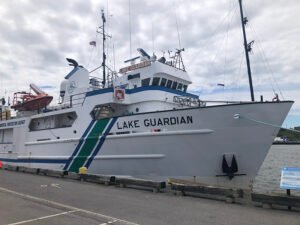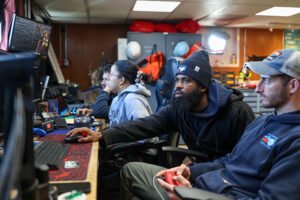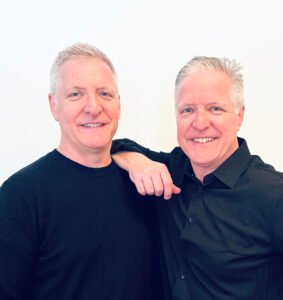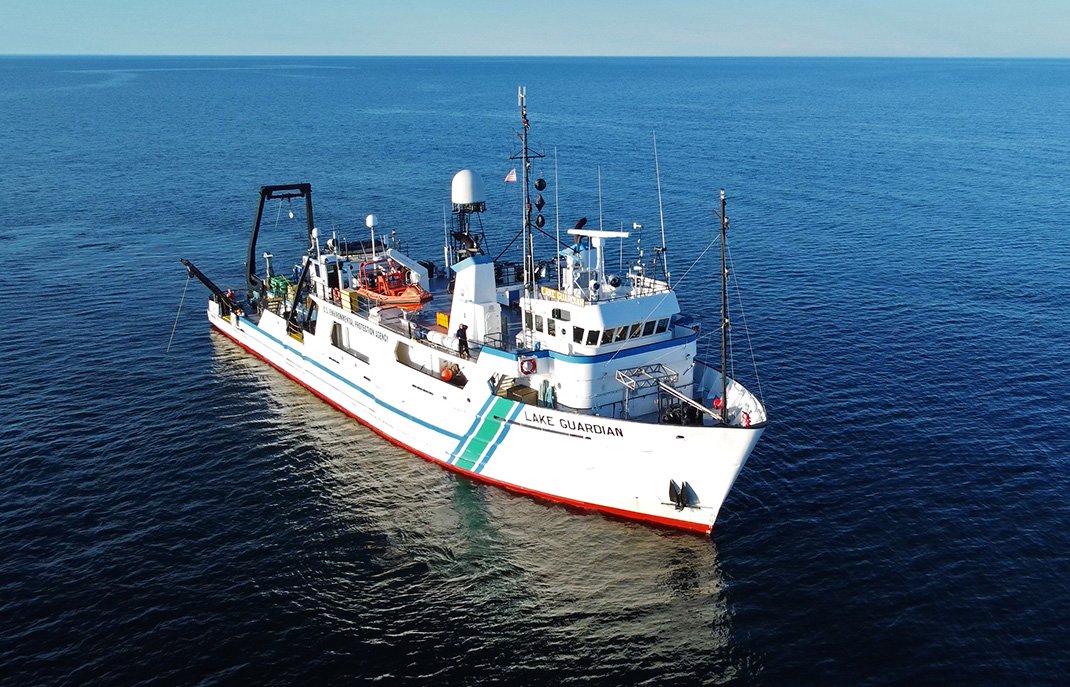A team from the Ocean Exploration Cooperative Institute at the University of Rhode Island has found two new shipwrecks in Lake Ontario, part of a diving and mapping expedition through Lake Ontario
By Tom and Jerry Caraccioli

As a main water thoroughfare along the Great Lakes and Canada where essential materials were transported to burgeoning East Coast and Midwest cities, Lake Ontario’s eastern coast was a well-traveled waterway in the 19th century.
Last year the National Oceanic and Atmospheric Administration (NOAA) designated a 1,722-square-mile area of eastern Lake Ontario as America’s 16th national marine sanctuary, creating an underwater park extending from the mouth of the St. Lawrence River to west of Rochester.
The Lake Ontario National Marine Sanctuary is the first of its kind in New York, and only the third in the Great Lakes region.
Though shipwrecks along this water route don’t hold the same lore, history and romance of a ship like the RMS Titanic, which famously went down in the North Atlantic Ocean in 1912, the waters along eastern Lake Ontario are home to 65 known, less heralded, historic shipwrecks.
The unpredictable forces of nature and lack of sophisticated weather monitoring tools and equipment, along with high winds, snowstorms and heavy waves, created a recipe for nautical tragedies and disasters in the 19th century.
This past June, experts from NOAA’s Ocean Exploration Cooperative Institute, students from the University of Rhode Island and maritime archeologists aboard the research vessel Lake Guardian visited Oswego and the surrounding area along eastern Lake Ontario. They explored the Lake Ontario National Marine Sanctuary and further mapped out the area for sunken vessels.

“One of the most interesting parts of this expedition was realizing how little we know about the lakebed,” said Jason Fahy, associate director of the Ocean Exploration Cooperative Institute at the University of Rhode Island. “As a marine researcher, I always like to begin with a map that helps me understand what we might find on the bottom. For a large portion of the lake, high resolution maps don’t exist. NOAA is investing time and resources to create these maps, but it will take years of surveying before they are complete. For our project we installed a multibeam sonar on the Lake Guardian that allowed us to map large swaths of the lake at night with the hope that we would spot a wreck which we could dive on the next day. I’m proud to say that our student mapping team is now able to claim the discovery of two new wrecks within the lake.”
At 180-feet long and weighing 959 tons, the Lake Guardian is the largest research vessel in the Environmental Protection Agency’s (EPA) fleet.
The vessel berths 42 (14 crew members and 28 visitors) and conducts research and monitors the biological ecosystems of all five Great Lakes (Superior, Michigan, Huron, Erie and Ontario) annually.
“The Great Lakes served as a critical shipping corridor for goods that enabled the United States expansion westward,” Ben Ioset, maritime archeologist from NOAA explained. “An individual shipwreck in the lake represents a snapshot into the lives of the people onboard and the technology of the time. Multiple shipwrecks like those found within the National Marine Sanctuary can tell the story of technological advancements throughout the 1800s. The cargo within the wrecks also tells a story about how demand shifted from packaged goods such as a bundle of farm implements like shovels to bulk goods like lumber and coal. I loved finding each wreck, but they came to life when the archeologists described what that ship meant to the crew, passengers and local communities.”
Much of the work below the surface is done by “Rhody” — the “remotely operated vehicle” or ROV. Property of the University of Rhode Island, the ROV reminds the crew of their home base and the mascot of the school. The ROV is tethered to the surface by an umbilical cord that provides power and data with the ability to be operated anywhere in the world with a reliable internet connection. The data pathway is fiber optic allowing scientists to configure Rhody with the best cameras and have those images sent to the ship in real time. The underwater camera, operated by URI student scientists during this exploration, captured clear and distinguishable images of already discovered wrecks like “The Farmer’s Daughter,” “The Phillip Becker” and “The Roberval.”
“For the project in Lake Ontario the vehicle was configured as a world class imaging system,” Fahy explained. “We arranged multiple cameras on the vehicle allowing us to collect images for 3D modeling and IMAX quality video simultaneously. Over the next few months Rhody will be configured with robotic arms allowing it to collect samples from the lakebed.
“I hope to be back regularly with my team to continue our exploration. Maybe we could have a few students from SUNY Oswego join us to pilot the ROV or host a livestream. My biggest take away is the realization that even within the continental United States there are still so many discoveries yet to be made. Each shipwreck has a story to be told, and I hope I’m able to be a part of telling them.”
One only has to look west toward the Wisconsin Shipwreck Coast or Thunder Bay National Marine Sanctuaries to understand the prospects of a future booming tourist industry featuring world class visiting centers, diving and cruise ship visits.
“The sanctuary holds enormous potential to elevate Oswego as a premier destination for history enthusiasts, divers and visitors eager to explore the rich heritage of the Great Lakes region,” Oswego Mayor Robert A. Corradino, recently told The New York Times.
If the team of the Lake Guardian has their say, they will surely be back to the Port City. “One lasting impression is that Oswego is amazing,” Fahy enthusiastically concluded. “Whether it be the waterfront park and new pier or the local food and drink, we had a fantastic time. I do want to thank Bill Gallagher at Industrial Precision Products who manufactured a custom steel plate that allowed us to mount our sonar to the ship. Without Bill’s help we wouldn’t have been able to use our sonar, which would have limited our search capabilities. Industrial Precision Products saved the expedition!”
 Tom and Jerry Caraccioli are freelance writers originally from Oswego, who have co-authored three books: “STRIKING SILVER: The Untold Story of America’s Forgotten Hockey Team,” “BOYCOTT: Stolen Dreams of the 1980 Moscow Olympic Games” and “Ice Breakers.”
Tom and Jerry Caraccioli are freelance writers originally from Oswego, who have co-authored three books: “STRIKING SILVER: The Untold Story of America’s Forgotten Hockey Team,” “BOYCOTT: Stolen Dreams of the 1980 Moscow Olympic Games” and “Ice Breakers.”




